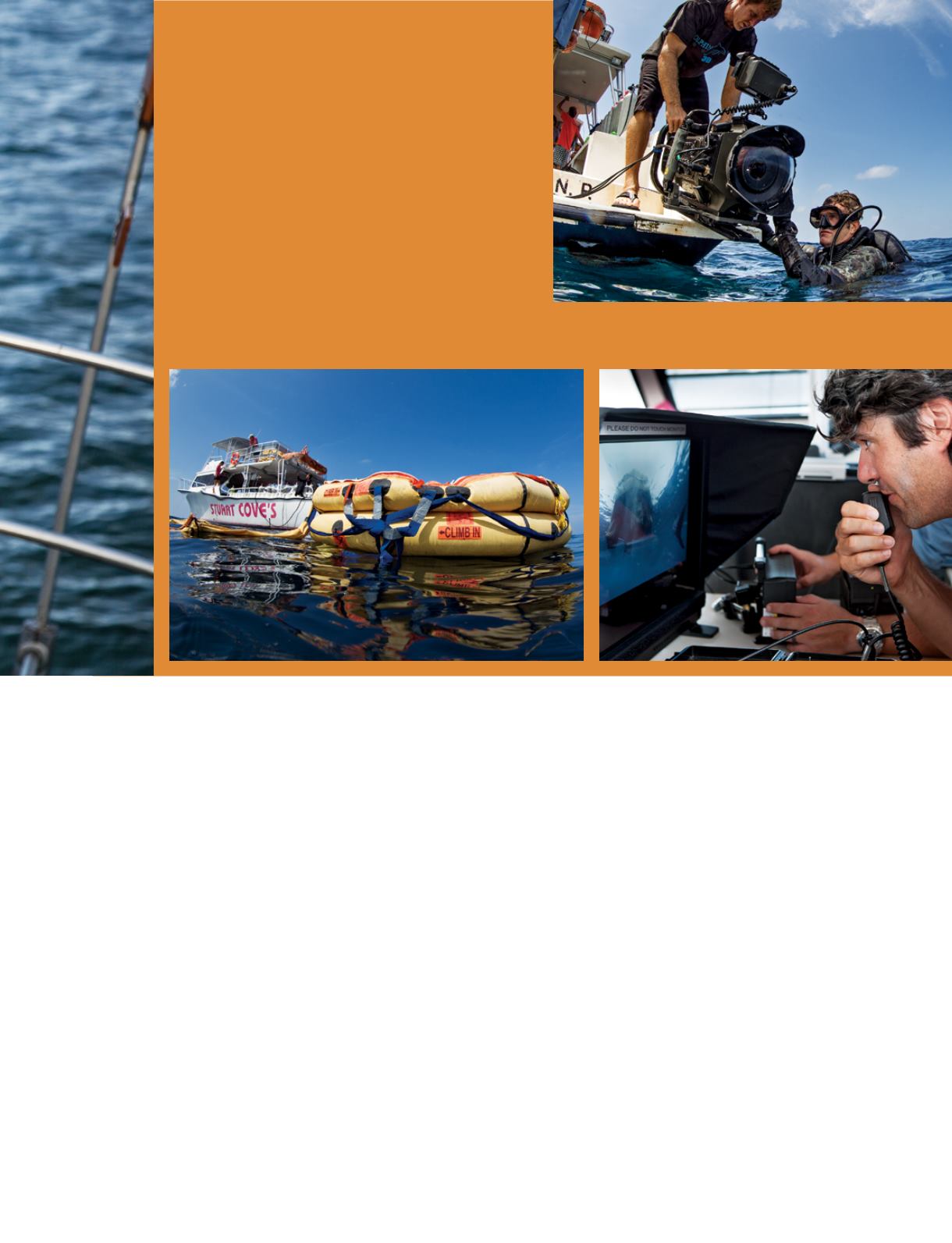
it. There is a scene in which the man stands in chest-deep
water in his sinking ship and shaves his face before a mirror.
The scene is both mundane and extraordinary in that the
opportunity may never again exist for Our Man. Such sublime
moments are the hallmarks of this film, which Entertainment
Weekly called “scarier than anything in The Perfect Storm.”
Chandor was never a Wall Street trader before making
Margin Call, but he was a sailor before he made All is Lost. He
had experienced ocean-induced fear, too. He was once caught
in a wicked storm during a yacht delivery to Bermuda — a
psychological shadow that came out of hiding for this script.
“Script” might be too grand a description of the project’s
origin though; the spare, 32-page treatment was more like a
narrative or an essay. I asked Chandor how he managed to
bring such a major talent on board for that kind of project.
In the past 15 years Robert Redford hadn’t acted in a single
picture he hadn’t directed. Why was Chandor’s film so special?
“I was at a seminar for filmmakers at Sundance, and Robert
Redford was speaking,” Chandor said. “Margin Call had done
very well at the festival, but I hadn’t actually met Redford yet. I
was sitting in the back of the room listening to this really iconic
voice — one we’d all grown up with from so many movies. He
was describing his 1972 film, Jeremiah Johnson, in the context
of a man who had the choice to give up or continue in the
face of daunting odds. He goes on because that’s all he can do.
Some might have given up, but he never does. That’s the spirit I
envisioned for Our Man.” So he sent Redford the treatment.
It is perhaps surprising that Redford isn’t inundated with
movie pitches from aspiring filmmakers. “There’s something
ironic in that; all these years after starting Sundance and
starting the film festival, none of the filmmakers I supported
ever hired me,” Redford said with the smile we’ve all seen
so often. “They never offered me a part until J.C.” Four days
after receiving the script, Redford invited Chandor to a
meeting at his office in Los Angeles. Ten minutes into the
meeting Redford slapped his knee and said, “I just wanted to
make sure you aren’t totally crazy. Let’s do it!”
At that point, the daunting task of making this film set in.
Sinking a boat repeatedly is not a project for the open ocean,
so a water set had to be found. The perfect set was at Baja
Studios in Rosarito, Mexico. It was built by James Cameron
to shoot the marine effects for Titanic, but the studio had
gone largely unused for years because of security concerns
in an area rife with drug warfare. The Mexican government
eventually intervened, security was provided, and the All Is
Lost crew got access to three giant water tanks. Among them
|
17
1 6
/ a l l i s l o s t
1 9
/ w a t e r l u s t
2 0
/ s o u t h e r n c a l i f o r n i a
s t r a n d i n g s
2 2
/ T H E e v o l u t i o n o f a s h i p w r e c k
2 4
/ d a n m e m b e r p r o f i l e
2 8
/ d a n o n l i n e v i d e o s e r i e s
/ m e m b e r b e n e f i t
2 9
/ d a n c a l e n d a r o f e v e n t s
/ e d u c a t i o n s p o t l i g h t
Clockwise from top right: Director of Underwater Photography Pete Zuccarini prepares to shoot a scene with his housed Arri Alexa.
Writer/director J.C. Chandor checks the underwater video footage being fed to him live via optical cable. Much of the open-ocean
filming of the life raft was done at Stuart Cove’s Dive Bahamas. Opposite: Robert Redford takes the helm in the new film All Is Lost.
Daniel Daza
STEPHEN FRINK
STEPHEN FRINK
STEPHEN FRINK


